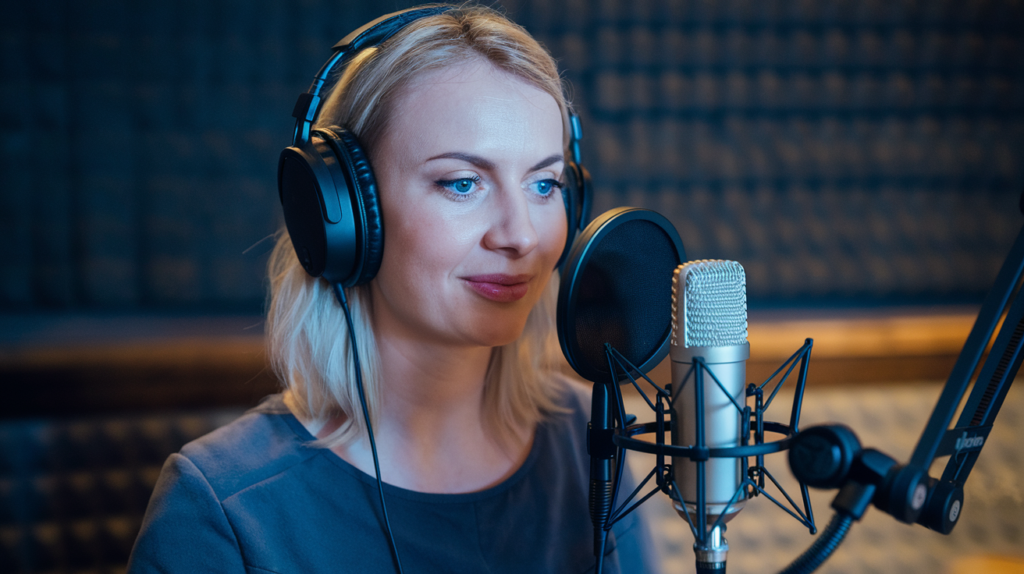Key Takeaways
- Enhance Accessibility: Subtitles make videos accessible to a broader audience, including those who are deaf or hard of hearing, and aid non-native speakers in comprehension.
- Cultural Relevance Matters: Tailoring subtitles to resonate with Polish culture by using idiomatic expressions fosters relatability and enhances viewer engagement.
- Timing is Crucial: Proper synchronization of subtitles with dialogue ensures viewers can follow along without losing track of visuals, creating a seamless viewing experience.
- Professional Expertise is Key: Engaging skilled translators and voice talent familiar with regional nuances improves the authenticity and emotional impact of your content.
- Utilize Effective Tools: Leverage software like Aegisub or Adobe Premiere Pro for streamlined subtitle creation while maintaining quality and accuracy.
- Continuous Improvement: Regularly assess viewer feedback and analytics to refine your subtitle strategy for better audience connection and engagement over time.
Ever wondered how to make your videos resonate with Polish audiences? A well-crafted Polish subtitle strategy can be the game-changer you need. In a world where engaging content is king, subtitles are more than just translations—they’re your bridge to connect with viewers who crave accessibility and understanding.
Overview of Polish Subtitle Strategy for Video
A well-structured Polish subtitle strategy significantly enhances your video’s impact on Polish audiences. Subtitles aren’t just about translating spoken words; they play a vital role in making content more accessible and engaging. They help viewers follow along, even when audio isn’t an option.
When crafting subtitles, focus on accuracy and cultural relevance. It’s essential to maintain the original tone and intent while adapting phrases that resonate with Polish viewers. Using colloquial expressions can make your content feel more relatable.
Consider timing as well. Ensure subtitles sync correctly with voiceovers or dialogue, giving viewers enough time to read without losing track of the visuals. Proper placement is key too—subtitles should not obstruct important visual elements within the frame.
Collaboration with skilled professionals adds value to this process. Engaging voice talent who understand regional nuances can enhance overall audience connection. It’s worth investing in experienced voice artists who can deliver authentic performances tailored for your target demographic.
Incorporating interactive elements like closed captions also broadens accessibility, catering to diverse viewer needs such as hearing impairments or language learners. These features enrich user experience and encourage longer viewing times.
By focusing on these strategies, you create compelling video content that resonates deeply with Polish audiences, fostering a stronger connection and driving engagement.
Importance of Subtitles in Video Content
Subtitles play a vital role in video content, especially when aiming to connect with diverse audiences. They enhance accessibility and understanding, ensuring that viewers can engage with the material regardless of their language proficiency or hearing ability.
Enhancing Accessibility
Subtitles make videos accessible to everyone, including those who are deaf or hard of hearing. By providing text alongside audio, you allow all viewers to grasp your message fully. This inclusivity broadens your audience base and fosters a connection with people who might otherwise miss out on your content. Furthermore, subtitles benefit non-native speakers by helping them follow along more easily. They can read while listening, reinforcing comprehension and language learning.
Improving Engagement
Engaging content captures attention, and subtitles contribute significantly to this goal. They enable viewers to consume video without sound—ideal for environments like offices or public spaces where audio may not be an option. Subtitled videos often see higher retention rates because they cater to various viewing preferences. By keeping the original tone intact while adapting phrases for cultural relevance, you create a more relatable experience for Polish audiences specifically. Well-timed subtitles enhance storytelling by guiding viewer focus and emphasizing important moments within the visual narrative.
Incorporating subtitles into your video strategy amplifies both accessibility and engagement potential. With clear communication through well-crafted text, you pave the way for deeper connections with your audience.
Key Elements of a Polish Subtitle Strategy
A well-defined Polish subtitle strategy includes several key elements that contribute to effective communication with your audience.
Language Accuracy
Language accuracy plays a crucial role in subtitle strategy. It’s not just about translating words; it’s about conveying meaning. Each phrase should reflect the original content’s intent while maintaining fluency in Polish. Using professional translators familiar with both languages ensures that cultural nuances and idiomatic expressions are handled correctly. This approach enhances clarity and prevents misinterpretations, allowing viewers to connect more deeply with your message.
Cultural Relevance
Cultural relevance is essential for resonating with Polish audiences. Adapting phrases and references to align with local customs and sensibilities creates relatability. Your subtitles should avoid direct translations of culturally specific terms that might confuse viewers. Instead, opt for equivalents that evoke similar emotions or associations in the Polish context. By doing so, you enhance engagement and foster a sense of belonging among viewers, making them feel like the content speaks directly to their experiences.
Timing and Synchronization
Timing and synchronization are vital components of an effective subtitle strategy. Subtitles must appear on screen at the right moments to match spoken dialogue without disrupting visual storytelling elements. Proper timing allows viewers to absorb information seamlessly while following along with visuals. Additionally, consider how subtitles interact with other audio elements, such as voiceovers or sound effects, ensuring they don’t compete for attention but rather complement one another—creating an enriched viewing experience overall.
By focusing on these key elements—language accuracy, cultural relevance, and timing—you can craft a robust Polish subtitle strategy that enhances viewer engagement and accessibility across diverse audiences.
Tools and Technologies for Subtitle Creation
Subtitle creation involves various tools and technologies that streamline the process, ensuring high-quality output. Selecting the right software can significantly impact your subtitle strategy.
Software Options
Numerous software options facilitate subtitle creation. Some popular choices include:
- Aegisub: This free tool offers powerful features for timing and styling subtitles, ideal for both beginners and experienced users.
- Amara: Great for collaboration, Amara allows multiple contributors to work on subtitles simultaneously, making it easier to manage projects.
- Adobe Premiere Pro: Integrating subtitle creation directly into video editing enhances workflow efficiency by allowing you to edit audio and text in one place.
- Final Cut Pro X: This professional-grade software supports advanced subtitling techniques, ensuring your videos look polished.
Choosing a suitable software solution depends on factors like budget, project size, and desired features.
Automation vs. Manual Subtitling
When considering subtitle creation methods, weigh automation against manual subtitling. Automated tools offer speed but often lack accuracy. They may misinterpret dialogue or miss cultural nuances essential for Polish audiences.
Manual subtitling provides greater control over language accuracy and cultural relevance. Professional translators ensure that idiomatic expressions resonate with viewers while maintaining the original tone of the content. Although this method requires more time and effort, the results are typically more polished.
Incorporating both approaches can be beneficial; automating initial transcriptions saves time while allowing professionals to refine them further. Balancing speed with quality ensures your subtitles enhance engagement without sacrificing clarity or connection with the audience.
Remember that effective subtitles don’t just translate words; they tell a story that resonates with viewers on a deeper level. By leveraging appropriate tools and strategies in your subtitle creation process, you amplify accessibility while connecting meaningfully with Polish audiences.
Best Practices for Implementing a Polish Subtitle Strategy
Implementing an effective Polish subtitle strategy requires attention to several best practices.
- Engage Professional Translators
Engage professional translators who understand both the source language and Polish culture. This expertise ensures accuracy, capturing idiomatic expressions that resonate with viewers.
- Maintain Tone and Intent
Maintain the original tone and intent of your content. Subtitles should reflect the emotional nuances of dialogue, allowing viewers to connect deeply with the material.
- Adapt Cultural References
Adapt cultural references within subtitles for local relevance. Instead of direct translations, use phrases familiar to your Polish audience, enhancing relatability.
- Focus on Timing and Placement
Focus on timing and placement so subtitles sync seamlessly with dialogue. Properly timed subtitles allow viewers to absorb information without distraction from visuals or audio elements.
- Incorporate Voice Talent When Necessary
Incorporate voice talent where appropriate, especially if using voiceovers alongside subtitles. Skilled voice artists can enhance engagement by adding another layer of connection for viewers.
- Utilize Captioning Tools
Utilize captioning tools that streamline the subtitling process while preserving quality. Software solutions like Aegisub or Adobe Premiere Pro offer features designed specifically for creating effective subtitles.
- Test Viewer Experience
Test viewer experience by gathering feedback on subtitle effectiveness before finalizing content distribution. Assess how well audiences engage with your videos based on subtitle clarity and relevance.
- Ensure Accessibility Features Are in Place
Ensure accessibility features are in place for diverse audiences, including those who are deaf or hard of hearing. Closed captions not only improve understanding but also broaden your reach significantly.
- Continuously Improve Your Strategy
Continuously improve your subtitle strategy based on analytics and viewer responses after releasing content into the market; adjustments can lead to better audience connections over time.
By focusing on these best practices, you create a robust Polish subtitle strategy that enhances accessibility, engagement, and overall viewer satisfaction while effectively connecting with your target audience.
Conclusion
A strong Polish subtitle strategy can transform your videos into engaging experiences for viewers. By prioritizing accuracy and cultural relevance you ensure that your content resonates on a deeper level.
Adapting phrases and references while maintaining the original tone allows you to connect authentically with the audience. Attention to timing and placement enhances clarity making sure subtitles complement rather than distract from visuals.
Incorporating professional translators and utilizing effective tools guarantees high-quality subtitles that foster inclusivity. As you refine your approach based on viewer feedback you’ll not only enhance accessibility but also enrich engagement, paving the way for lasting connections with Polish audiences.
Frequently Asked Questions
Why are subtitles important for Polish audiences?
Subtitles enhance accessibility and understanding, allowing Polish viewers to connect deeply with video content. They help convey the original tone and meaning while adapting phrases to reflect cultural relevance, making the material more relatable.
How can I ensure my subtitles resonate with Polish viewers?
Engage professional translators who understand both languages and Polish culture. Focus on cultural nuances, timing, and placement of subtitles to maintain clarity and enhance viewer engagement.
What tools can I use for creating Polish subtitles?
Popular subtitle creation tools include Aegisub, Amara, Adobe Premiere Pro, and Final Cut Pro X. Each offers unique features tailored to different user needs for effective subtitling.
Should I use automated subtitling tools or manual methods?
While automated tools save time, they often miss cultural nuances. A combination of both methods—automation for efficiency and manual subtitling for accuracy—provides high-quality results.
How do subtitles improve accessibility in videos?
Subtitles make content accessible to deaf or hard-of-hearing individuals as well as non-native speakers. They allow viewers to engage fully without sound, broadening the audience base significantly.
What best practices should I follow when implementing a subtitle strategy?
Engage professional translators familiar with local culture, focus on accurate timing and placement of subtitles, incorporate voice talent when needed, and continuously test viewer experience based on feedback.
How can I measure the effectiveness of my subtitle strategy?
Utilize analytics tools to track viewer engagement metrics such as watch time and retention rates. Gather direct feedback from your audience about their experience with the subtitles for continuous improvement.







